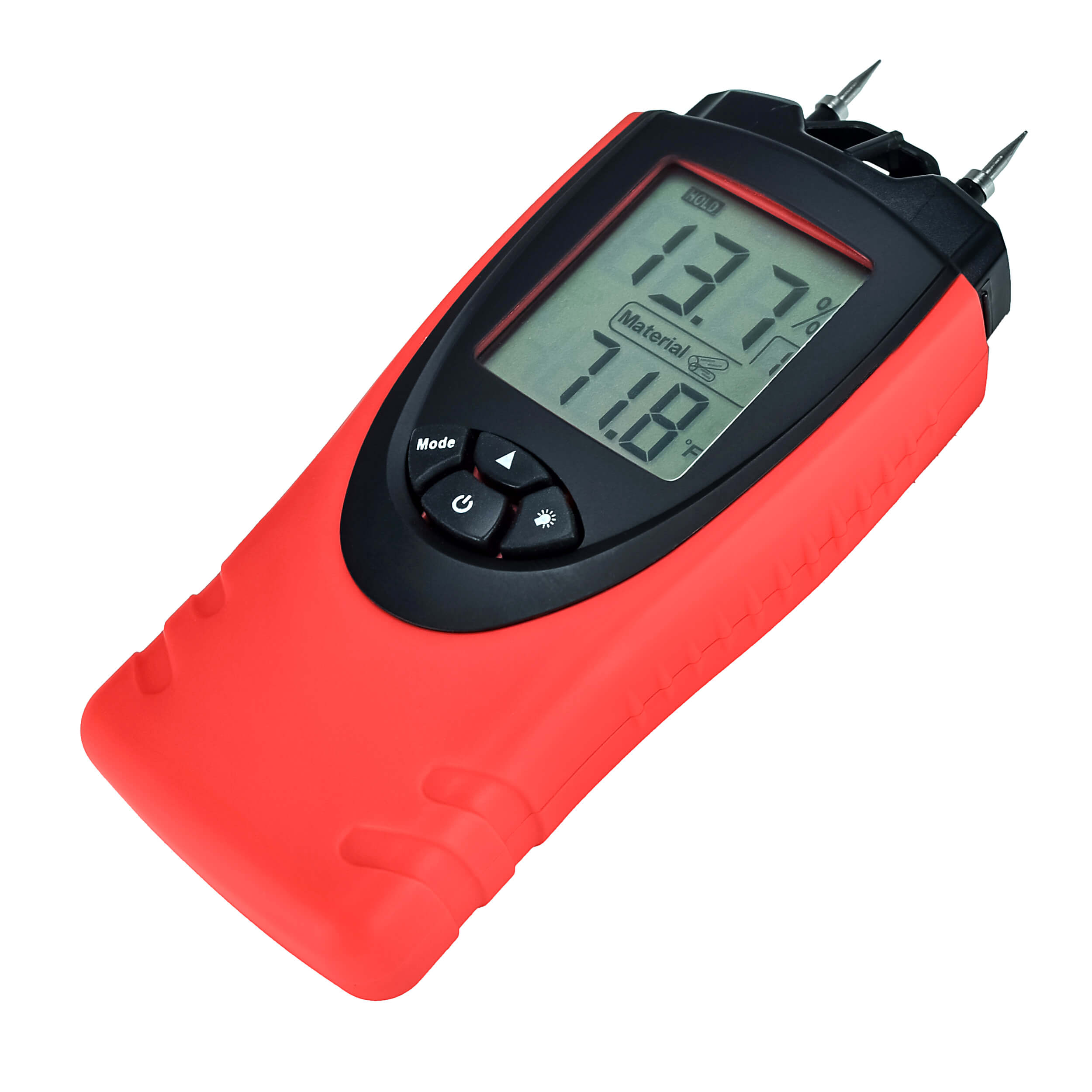Understanding the Various Kinds Of Moisture Meters and Their Applications
Understanding the Various Kinds Of Moisture Meters and Their Applications
Blog Article
Comprehending the Relevance of a Moisture Meter in Stopping Mold and Water Damages in Your Home
In the realm of home maintenance, the visibility of wetness can frequently be a silent yet powerful adversary, capable of causing prevalent mold development and perilous water damage if left unchecked. Understanding the value of a moisture meter in this fight is not simply an option but a strategic necessity.
Importance of Moisture Detection
Reliable wetness detection approaches are crucial for securing properties and protecting against prospective mold and mildew development and water damages. Wetness can seep right into numerous building materials, resulting in architectural concerns and health and wellness risks. By utilizing a dampness meter, homeowner can proactively identify areas prone to excess wetness, enabling prompt treatment and mitigation strategies.
Moisture meters offer precise analyses of dampness degrees in different products such as concrete, timber, and drywall. This information helps in pinpointing locations of issue, even in hard-to-reach or hidden locations. Early detection of moisture buildup enables punctual repair work or adjustments to stop further damage.

Just How Moisture Meters Job
Dampness meters play an essential function in the positive recognition of excess wetness, helping in the avoidance of possible mold and mildew growth and water damage by supplying exact readings of dampness degrees in numerous building products. These devices function based on various concepts, depending upon their kind. Moisture Meter. Pin-type moisture meters, for instance, have 2 pins that permeate the product to gauge the electrical resistance between them. When wetness exists, it improves the material's conductivity, leading to a lower resistance reading. Pinless wetness meters, on the other hand, usage electro-magnetic sensing units to scan the material without creating damage. These sensing units emit electromagnetic signals that permeate the material and gauge the dielectric properties, suggesting moisture web content. Some progressed dampness meters integrate both pin and pinless modern technologies for extensive moisture detection. Comprehending just how moisture meters function is essential for timely and exact wetness level analyses, enabling efficient preventative actions versus mold and mildew and water damages.
Detecting Early Indication
Upon initial inspection of a home, acknowledging subtle signs of excess dampness becomes crucial in the very early detection of potential mold development and water damages. Water discolorations can indicate leakages or seepage, while peeling off paint or wallpaper may be a result of wetness endangering the adhesion of these products to the surface area. Additionally, an increase in allergic reaction signs or breathing problems amongst passengers might recommend the presence of mold and mildew due to excess wetness.
Avoiding Mold Growth
Recognizing very early caution signs of excess moisture within a residential or commercial property not just allows prompt discovery of potential mold and mildew development and water damage yet additionally offers as a positive step in preventing the proliferation of mold. To effectively protect against mold growth, it is vital to attend to any kind of resources of wetness quickly.
Along with dealing with moisture sources, maintaining interior moisture levels below 60% can significantly prevent mold growth. Correct air flow, sufficient insulation, and utilizing air conditioners or fans can aid control indoor humidity levels. Keeping his response an eye on moisture degrees in locations susceptible to dampness, such as cellars and crawl spaces, making use of a wetness meter can likewise assist in very early discovery of raised wetness levels and prospective mold and mildew development. By taking proactive measures to avoid excess wetness and mold growth, home owners can protect their residential or commercial property and interior air high quality.
Advantages of Routine Surveillance
Routine surveillance of moisture levels in a residential or commercial property can play an important function in keeping a healthy indoor setting and stopping possible mold and water damages. By on a regular basis examining dampness levels, home owners can spot any type of issues quickly and take needed activities to avoid mold development and water damages. Among the crucial advantages of routine surveillance is early detection. By identifying and addressing high wetness degrees beforehand, property owners can step in before mold has the chance to spread out and establish. This positive method can conserve both money and time over time by protecting against extensive mold remediation and fixing costs.
In addition, regular monitoring enables home owners to track patterns and fads in moisture degrees in time. By establishing a standard and monitoring modifications, people can identify any locations of worry or potential susceptabilities in the residential or commercial property's framework. This data-driven method enables targeted treatments and maintenance initiatives to address underlying problems before they rise right into even more substantial issues. Eventually, the regular monitoring of dampness degrees empowers property owners to secure their building, guard their health and wellness, and protect the integrity of their interior atmosphere.

Verdict

By using a moisture meter, property owners can proactively recognize areas susceptible to excess moisture, enabling for timely intervention and mitigation techniques.

Keeping track of moisture degrees in areas susceptible to dampness, such as basements and creep spaces, using a wetness meter can additionally help in early discovery of elevated moisture degrees and potential mold and mildew development. (Moisture Meter)
Report this page